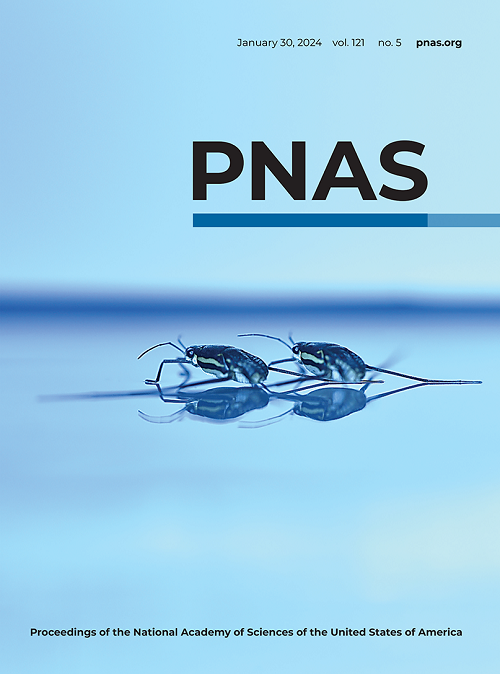Emergence and evolution of heterocyte glycolipid biosynthesis enabled specialized nitrogen fixation in cyanobacteria
IF 9.4
1区 综合性期刊
Q1 MULTIDISCIPLINARY SCIENCES
Proceedings of the National Academy of Sciences of the United States of America
Pub Date : 2025-01-27
DOI:10.1073/pnas.2413972122
引用次数: 0
Abstract
Heterocytes, specialized cells for nitrogen fixation in cyanobacteria, are surrounded by heterocyte glycolipids (HGs), which contribute to protection of the nitrogenase enzyme from oxygen. Diverse HGs preserve in the sediment and have been widely used as evidence of past nitrogen fixation, and structural variation has been suggested to preserve taxonomic information and reflect paleoenvironmental conditions. Here, by comprehensive HG identification and screening of HG biosynthetic gene clusters throughout cyanobacteria, we reconstruct the convergent evolutionary history of HG structure, in which different clades produce the same HGs. We find that rudimentary HG biosynthetic machinery was already present in cyanobacteria before the emergence of heterocytes for functions unrelated to nitrogen fixation and identify HG analogs produced by specific and distantly related nonheterocytous cyanobacteria. These structurally less complex molecules represent precursors of HGs, suggesting that HGs arose after a genomic reorganization and expansion of ancestral biosynthetic machinery, enabling the rise of cyanobacterial heterocytes in an increasingly oxygenated atmosphere. Our results open a chapter in the potential use of diagenetic products of HGs and HG analogs as fossils for reconstructing the evolution of multicellularity and division of labor in cyanobacteria.求助全文
约1分钟内获得全文
求助全文
来源期刊
CiteScore
19.00
自引率
0.90%
发文量
3575
审稿时长
2.5 months
期刊介绍:
The Proceedings of the National Academy of Sciences (PNAS), a peer-reviewed journal of the National Academy of Sciences (NAS), serves as an authoritative source for high-impact, original research across the biological, physical, and social sciences. With a global scope, the journal welcomes submissions from researchers worldwide, making it an inclusive platform for advancing scientific knowledge.

 求助内容:
求助内容: 应助结果提醒方式:
应助结果提醒方式:


